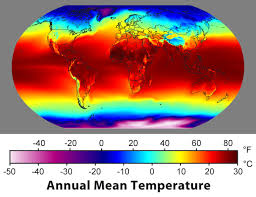Monthly temperature forecasting is getting harder

by Simon Walker (OzEWEX)
Methods to predict air temperatures over long time periods are of great interest to a range of users. Unfortunately, a new study finds that such predictions are becoming increasingly difficult.
Sancho Salcedo-Sanz and his colleagues from Universidad de Alcalá and the University of Southern Queensland analysed air temperature series from 1900 to 2010 taken at different stations in Australia and New Zealand using machine learning techniques. The analysis is carried out in a predictive point of view, specifically in a monthly predictive time-horizon (monthly mean temperature is predicted at each measuring station).

The research, published in Theoretical and Applied Climatology, highlights a recent trend in an increasing difficulty of predicting air temperature using predictive modelling methods.
“The results indicate a good performance of the prediction algorithms overall, but there is a curious pattern of error for the algorithms considered appears in the final years of evaluation: the error of the algorithms from 1970 onwards is significantly worse than the error in previous years.”
Although the drivers behind this change in the predictability of temperature remain unclear, the models are showing that the relationship between the variables considered and temperature are changing from the final decades of the past century.
“We of course cannot say what this change is due to, nor we have a clue on its origin, but our research clearly shows that this change in the relationship of climate variables with temperature has been produced, and also that it might have direct consequences in terms of changing patterns of temperature-related events.”
Reference: Salcedo-Sanz et al. (2015) Monthly Prediction of Air Temperature in Australia and New Zealand with Machine Learning Algorithms (link)
